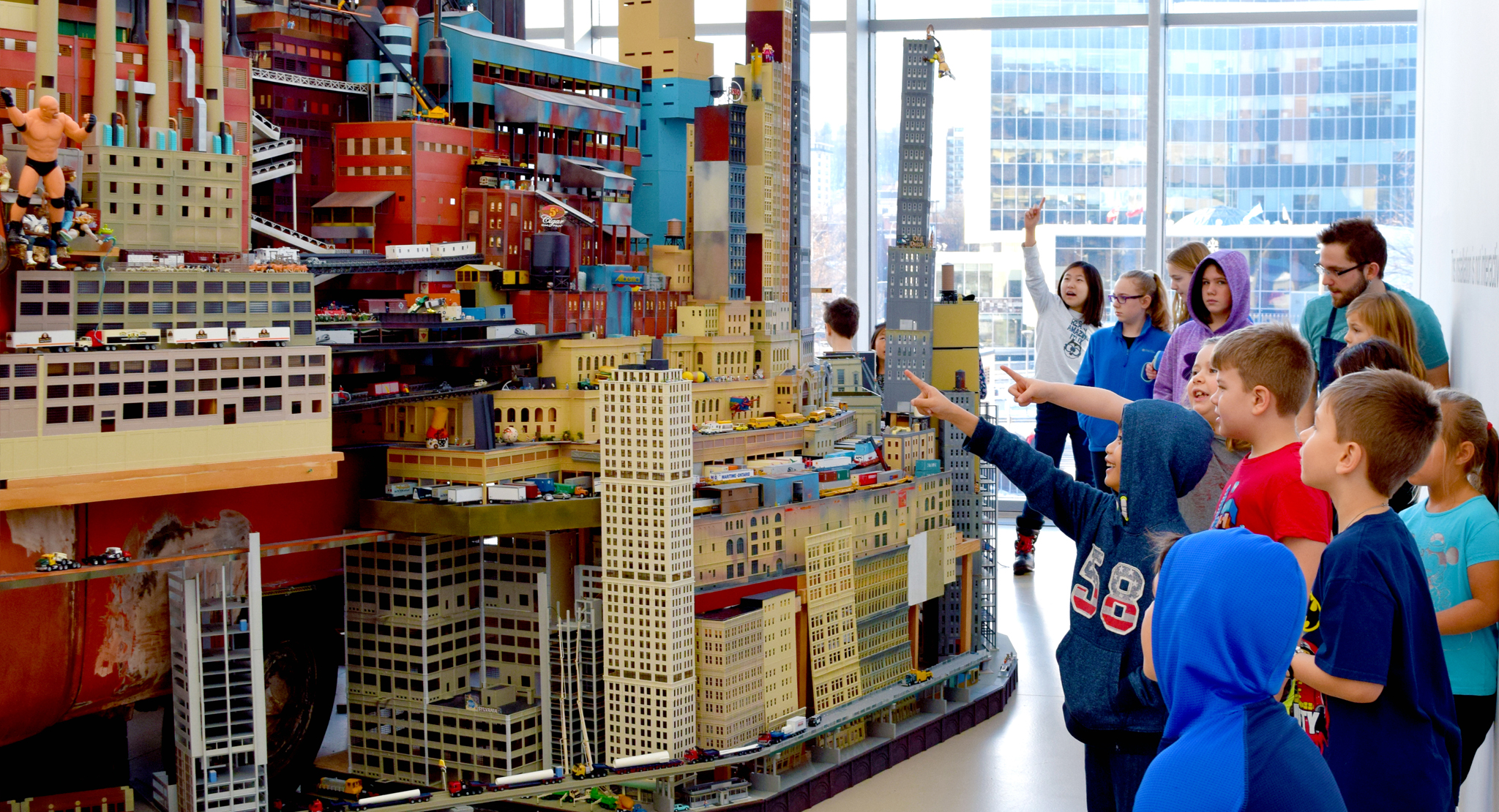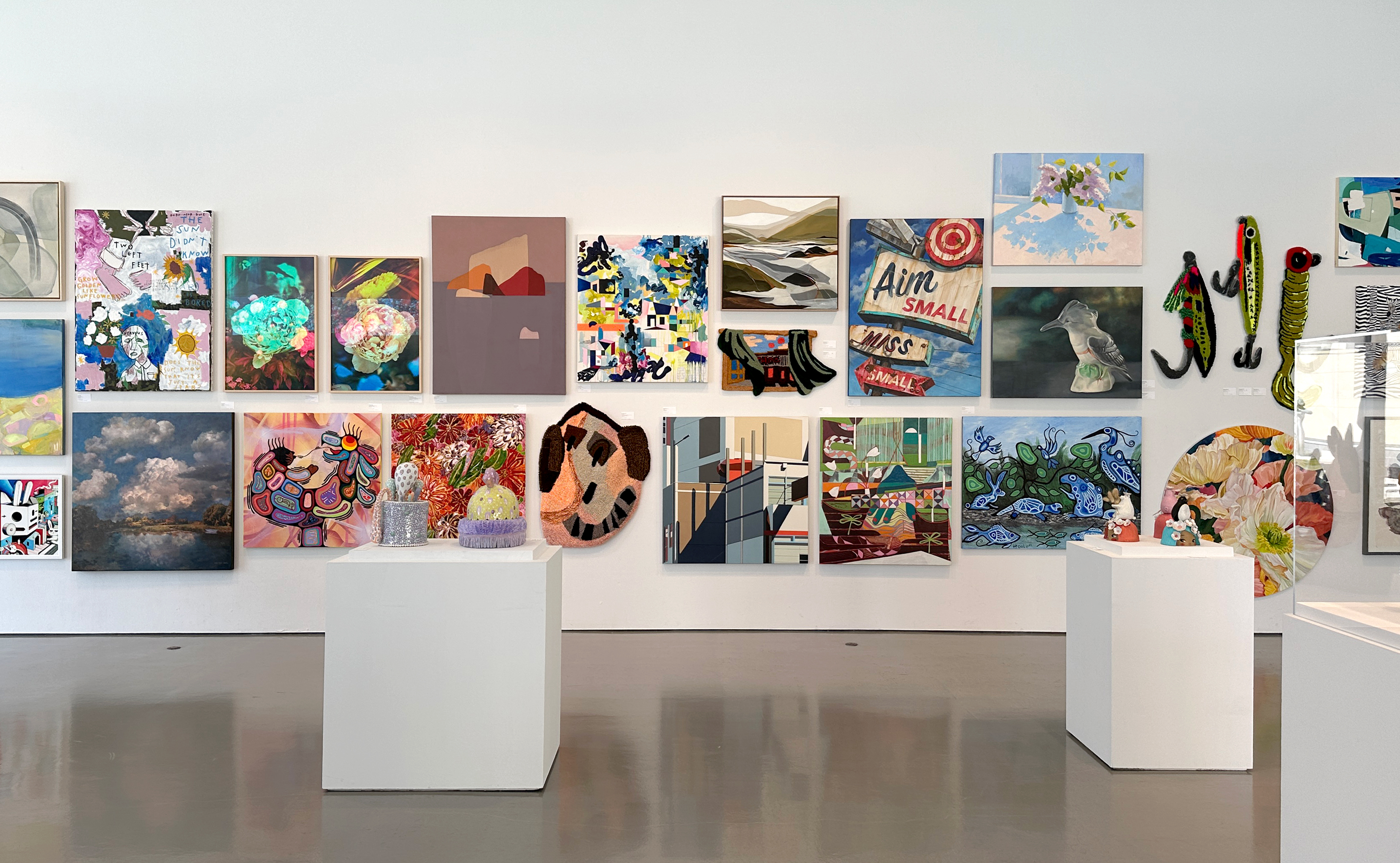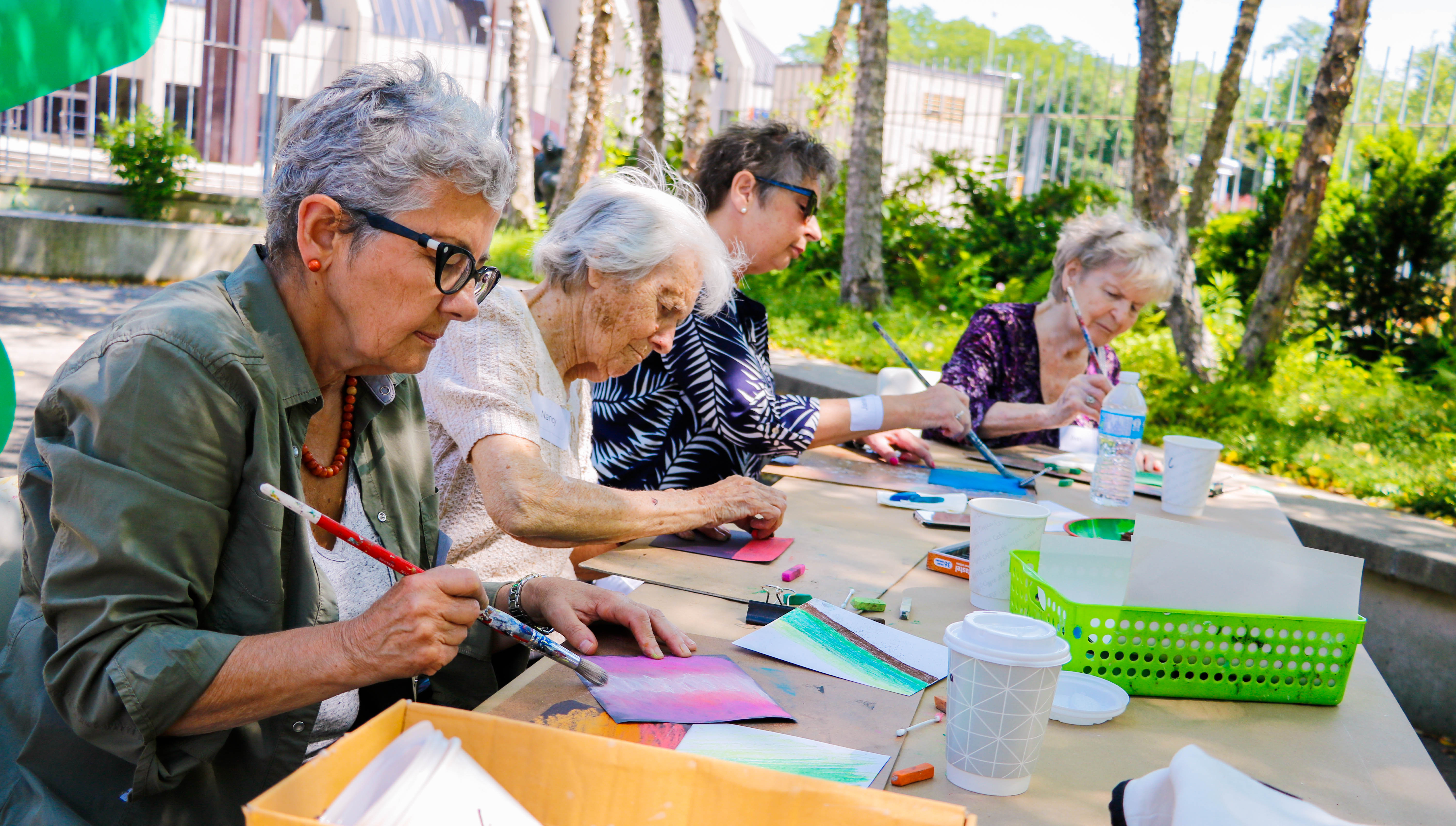As the year draws to a close, we find ourselves reflecting on the dramatic changes that have unfolded around us, and the impact they have had on arts, culture, and education. As a key member of our AGH: Learn team, Sara Dickinson is the Senior Manager of Educational Outreach here at the Art Gallery of Hamilton, and a passionate advocate for bringing arts to the classroom and students into the Gallery.
I sat down with Sara to discuss the changes our educational offerings have undergone this year.
Connor: Considering how much schooling itself has shifted this year, what was our initial response in order to keep delivering educational art programs?
Sara: When the pandemic hit, our Education team at the AGH quickly came together to explore ways that we could adapt our AGH: In-Class and On-Site programming to a virtual platform, and AGH At Home was born. Virtual tours, online arts workshops, story-time, an online film series, and AGH: Learn Artist-Led Projects were all created as part of this project. Our goal was to help support teachers, parents, and students who were scrambling to understand all that remote learning entails, as well as to stay connected with our community. When I think back on it today, it seems unbelievable that all this restructuring was happening all over the world. We were all on this huge virtual learning curve, perhaps more of a mountain, and I’m still in awe of everyone’s tenacity, dedication, and resilience.
In the beginning, we wanted to entice students to the table with fun and engaging arts projects chosen by their teachers from a buffet of options created by our AGH: In-Class team of artist-educators. Rap, photography, drama and storytelling, zine and collage making, graphic cartoons and watercolour exploration – all projects were designed to make sure that every child could participate with all materials needed found in the home. Treasa’s Pop Up Puppetry project, for example, shows students how to make puppets out of old socks, wooden spoons, and toilet paper rolls, with options for creating faces using stickers from cans and other things in your kitchen. We encouraged kids to make watercolour paints out of dried-up old markers – a personal favourite of mine and a great opportunity to talk about recycling. At first, our projects were only asynchronous (a term I’d never heard until COVID, which essentially means pre-recorded); each artist filmed 3 workshops from their homes and sent them to the teachers they were working with, who would then share the content with their students.
By mid-May, some teachers were starting to feel more comfortable with the Teams platform and expressed interest in trying out live arts sessions to complement these videos. Each pre-recorded video was now followed by a live half-hour session with the artist, which was a great opportunity for students to ask questions, share their work, and get excited about developing the projects further. At this point, we really felt like were on to something that could have some real impact.
Here’s some of the response we got:
“Treasa, THANK YOU. This project has been transformational for my students. They have used their puppets in all of our subjects, even math! This project has been a great transition into many other units and subjects and is relatable for students.
Ibrahim was really excited to share his project with you as were the rest of the class. Clearly they have a passion for characters and puppets which I hope to continue throughout the rest of the year!
Thank you so much!
Remote Teacher – HWDSB”
Connor: How did those offerings adapt with the shift from the end of one school year to the start of another?
Sara: After piloting the program and getting such wonderful feedback from teachers, parents and students, we were invited by both the HWDSB and HWCDSB (Hamilton Wentworth District School Board and Hamilton Wentworth Catholic District School Board respectively) to work in their “virtual summer camp.” For four weeks, an incredible team of AGH artist educators were teaching in virtual classrooms throughout the city, supporting both boards in their Summer Learning Programs.
This Fall, we decided to further develop the AGH: Learn Artist-Led Projects by using the Gallery as our set, focusing on supporting the 250 teachers and 9000 students working and learning remotely this year. The artists redefined and developed their projects to creatively inspire and challenge students as well as tie in more of the curriculum, and each video was shot on location at the AGH by Hamilton artist Vanessa Crosbie Ramsay. Each artist has the opportunity to either choose a wall in the Gallery or a specific piece they wanted to highlight in their video, then talk a little bit about why they chose it and how it might connect or inspire their project.
So now, we’re in the Gallery to shooting our videos, creating a nice through-line between the projects and the art on our walls. AGH In-Class feels much more a part of the Gallery and I think it has been a very exciting and inspiring journey for all of us so far.
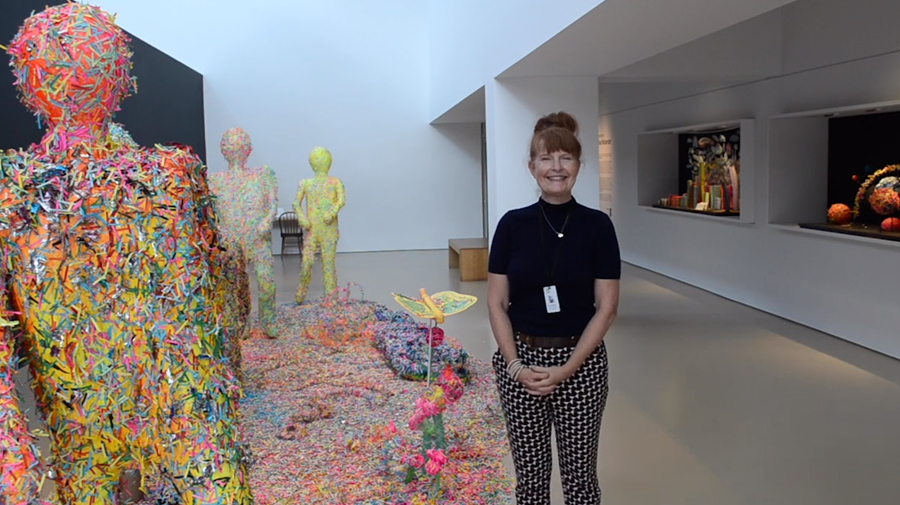
Connor: The team of artist instructors seem to be vital to this program’s success – tell us a little more about them!
Sara: I’m in awe of our team of artist-educators – each artist brings a very unique and creative way of connecting with students and sharing their arts practise, each of them talented, passionate individuals who really care about kids, education, and creating community through the arts. LTtheMonk, for example, is a local rap artist signed with Sonic Unyon, and he’s been teaching students to rap about everything from the feelings of isolation during the pandemic to writing songs about community, poverty in Hamilton, and The Harry Potter series. He does all of this while introducing the various components of rapping and poetry, taking the elements of rhyme scheme, metaphor, simile, imagery, topical choices and wordplay, culminating in each participant (student) being able to write and perform a full verse/song of their own. That’s just one example of how our instructors are connecting to the language curriculum and social justice issues with incredible success.
I would be remiss not to mention the rest of our artist instructors by name – so thank you to LTtheMonk, Treasa Levasseur, Melissa Murray-Mutch, Cornelia Peckart, Kelly Wolf, Nancy Benoy, and Jody Boston. You are the reason this program is so successful.
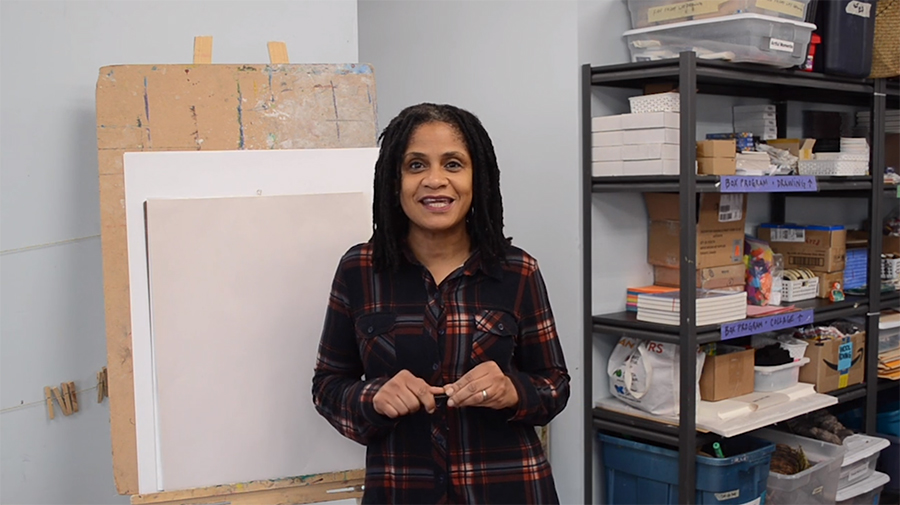
Connor: Is there anything you would like to share for the future of the program looking forward to 2021?
Sara: I hope that we can continue to expand AGH: Learn in the new year. I’m very interested in sharing our program with other more-remote locations beyond Hamilton and into other school boards throughout Ontario. This is an opportunity to reach students in more far-reaching communities that don’t often have the chance to work with artists in developing such a wide variety of arts-based curriculum-inspired projects.
By the end of June, we should have a ballpark number of about 135 finished projects in the Hamilton board and roughly 50 projects in the Catholic board as well. With each remote class/project averaging around 30 students, I’m very proud that we’ll be connecting with thousands of kids throughout the year.
Our youth are struggling through this pandemic on so many levels – emotionally, physically, and definitely academically. Our Artist-Led Projects are a tool to engage kids to creatively explore core subjects, and an opportunity to share their learning and understanding of the topic. In a small way, I think we can have a very positive impact in helping students to meet their academic goals, feel less isolated, and more connected to their peers, teachers and community.
Click here to learn more about our AGH: Learn offerings! Looking for more engaging ways to experience the AGH virtually? Head to AGH at Home for virtual tours, activities, and more.
